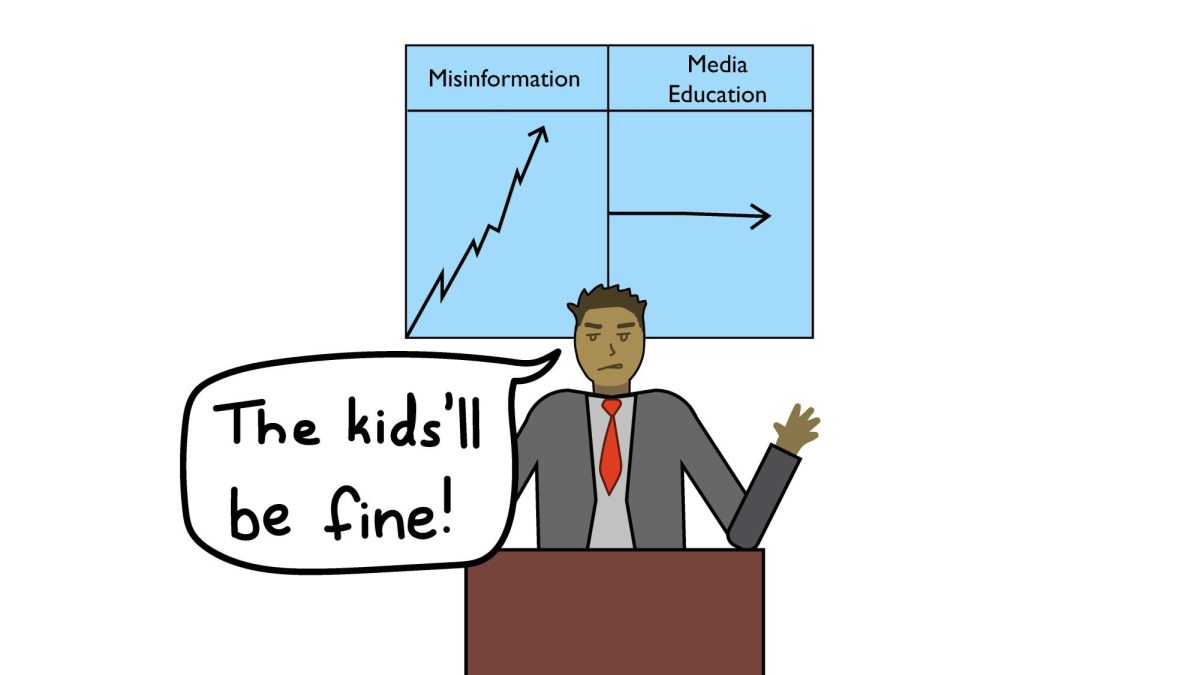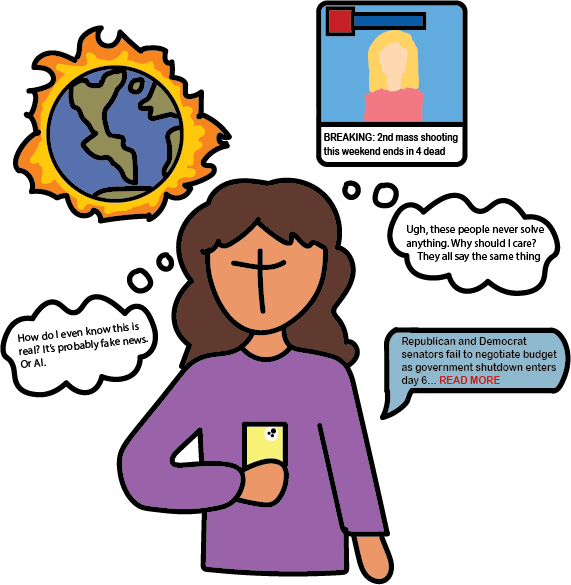Before the era of modern technology, paper boys would deliver the daily newspaper, and news of the prior day wouldn’t be widely known until the next morning. Today, news spreads like wildfire. In a media landscape manipulated by social media and artificial intelligence, it is increasingly difficult to distinguish fact from fiction. Schools should prepare students for the modern media landscape, but what they’re doing right now isn’t enough. They bear a significant portion of the responsibility for their part of the crisis, because their media literacy education is often insufficient. According to nonprofit Media Literacy Now, only 20 states — including Washington — have passed legislation to require media literacy education in schools. As media becomes increasingly more complex to navigate, more thorough education on media literacy is required to achieve an educated society that benefits all of us.
The decline of media literacy in our country stems from a variety of variables that have coalesced into a media landscape that overreacts to unverified, misleading or outright false information.While 54% of Americans in 2024 consumed news on social media, Pew Research Center reports that the ability to discern between false and true information has never been more challenging, with over 64% of Americans reporting confusion about facts due to fake news. At the core of this issue is the failure of the education system to adapt to changing times and prioritize media literacy as useful for students to grow into responsible, educated citizens. This lack of education has left many Americans in danger of manipulation and misinformation that only leads to a divided society.
In the online age, internet users frequently consume news, willingly or not. Social media apps like Facebook, TikTok and X, formerly known as Twitter, have increasingly become hubs for political echo chambers, bad faith discourse and, of course, misinformation. While increased access to news is certainly a positive, this level of accessibility makes it easier to spread false narratives. In my experience, I have received obviously false online stories from people in my life who sincerely believed that they were true, due to either confirmation bias of already held beliefs or sheer shock value.
Misinformation like this runs rampant on platforms such as Facebook. According to a report published by NYU, false information on Facebook received six times more engagement than facts during the 2020 election cycle. This shows how social media algorithms like Facebook’s disproportionately benefit misinformation because it’s more attention-grabbing than factual information, and it drives more engagement to a given social media platform. According to the National Institutes of Health, 56% of U.S. youth have social media, with the average age of minors online being just 12. Another NIH study found that adolescents 12-14 are unable to gauge credibility of information at a high level, meaning that the average youth online would almost certainly be exposed to misinformation at some point in their online lives, while not being able to critically evaluate it. Combined with the fact that just 40% of states in the country require media literacy education, it is clear that the current system leaves many kids behind. We can and must do better to combat the issue of media literacy in America. Schools across the country — in all 50 states — must be required to incorporate media literacy as a part of the core curriculum in English and history. Students need to be taught how to critically think and assess sources, understand media biases and recognize how information is curated and shared in the digital age. Additionally, there must be a concerted effort by not just the public, but those who make policy decisions on education, to hold media organizations, online content creators and politicians accountable for the content they produce and actions they take. Public scrutiny can go a long way to achieve this.
Ensuring that truth and accuracy take precedence over sensationalism and profit is critical. The modern media landscape may be complex, but an educated, informed populace can navigate it with the right tools and knowledge, as long as they are provided with those tools from an early age.
Sidebar headline: Online lives of older Americans
Older generations have struggled to keep up as the consistently reliable newspaper journalism of their childhoods has become sensationalized clickbait. A report published by the city of San Francisco states that 40% of older adults 65 and older living in the city don’t even have basic online literacy skills — defined by being able to evaluate and communicate online information — and one by Media Literacy Now found that 62% of current U.S. adults did not receive education about media messaging in high school. The challenges older generations face in navigating the complexities of modern media highlight the urgent need for schools to prioritize media literacy education. Previous generations grew up in an environment when media could largely be trusted, but that time has passed. By equipping all children and young adults with the tools to assess the media around them from a young age, they can continue to adapt over time and better navigate a constantly changing media landscape.
How to consume media responsibly:
1. Always check information for reliable sources. If it sounds too crazy to be true, often, it is!
2. Consider the intent of the media. Is it trying to push a narrative?
3. Look into the author. What are their previous works? What are their biases?
4. Check the dating of the media. Is it outdated?
5. If you remain unsure, consult a teacher.
Additional resource:
The nonprofit Media Literacy Now offers high schoolers the most comprehensive online information on media literacy in our modern age, and it is a great resource from which to learn more.











